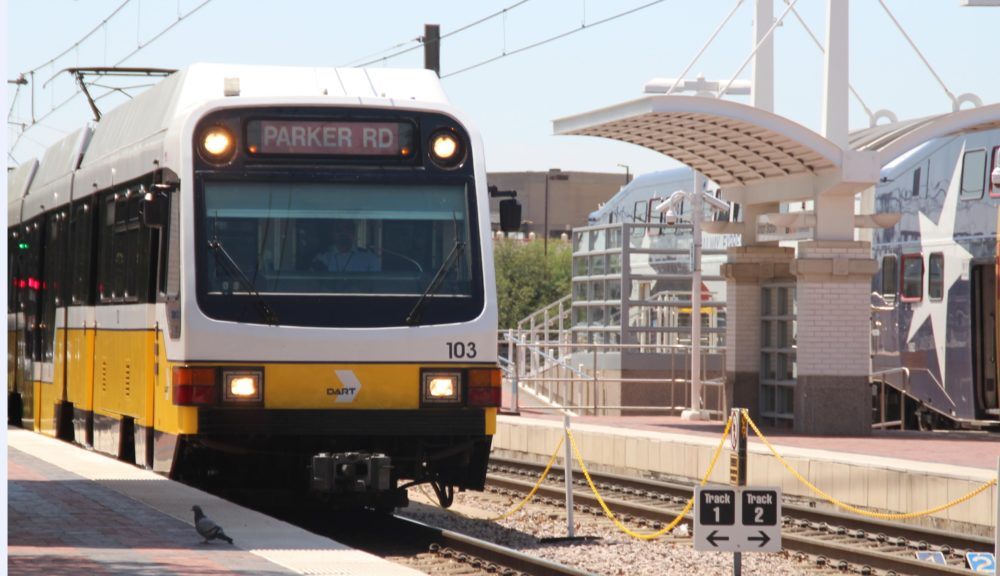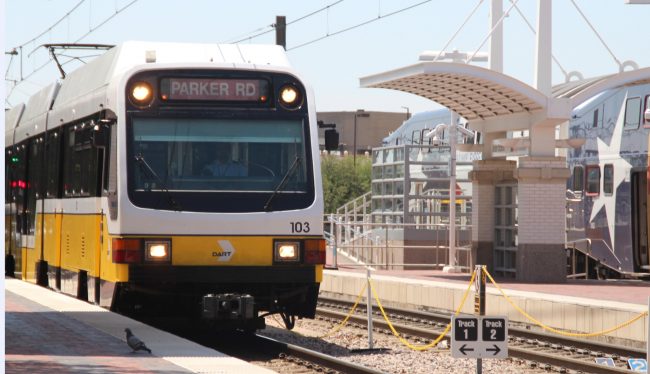
DART police report an average of more than 76,000 daily train riders. (Christopher Saul / The Daily Campus)
The DART is not safe according to SMU students and faculty who either ride it regularly, or have in the past.
Mass transit was raised as an issue on campus during the dedication of the George W. Bush Presidential Center last week.
Students were asked by the administration to park almost 10 miles away from campus and use DART to get to their classes.
According to DART police statistics, the average daily ridership overall is 76,056, and 112 violent crimes occurred on the rails in 2012, three of which reported as a homicide and two sexual assaults. The others were robberies or aggravated assaults.
Alysia Hall is a victim of what she described as “an attack.” She now sees the DART as a mode of transportation that is good overall but says that her feelings on the transit system are mixed.
“I do feel safe,” Hall said, “Except for at night. I wouldn’t ride it alone at night.”
SMU professor Ben Voth, who commutes via DART, said that police officers have come aboard the train at Mockingbird Station several times and given safety talks to passengers.
“I appreciate [the talks]. It enforces the idea that there are risks,” Voth said. “That being said, I’ve never felt so unsafe that I didn’t go on DART.”
Mark Ball, the public information officer for DART, said that while there are some problems with mass transportation, things are getting safer.
“Our 2012 customer satisfaction survey shows [that respondents tend] to support our police efforts. Eight in 10 passengers are satisfied with DART, and more than 60 percent believe we are doing better than a year ago. Also, nearly nine in 10 said that they are likely to continue using DART in the future.”
Ball also said that in comparison to other mass transit authorities around the country DART is doing a much better job at keeping customers safe.
Although violent crime might be the most significant issue that SMU students experience while riding the DART, hostile police officers have also been a factor in the reluctance to ride.
SMU sophomore Dakota Warde-Levie had an unpleasant encounter with DART police that she said permanently soured her view of the system.
Earlier this semester, she and a friend purchased tickets to ride the DART downtown for a school field trip.
Shortly after boarding the train, a ticket-taker appeared in their car and demanded that they present their tickets.
The tickets, which were bought at the station, were apparently not what the official wanted to see.
“We assumed that it would be just like a movie ticket,” Warde-Levie said, “where as long as you had your student I.D. and your ticket, everything was fine.”
Warde-Levie’s mother, Sandra Warde-White, added that she took pictures of the machines.
“It is completely unclear that you must have DART identification for the type of ticket that they bought,” Warde-White said.
Warde-White has filed a formal complaint with DART, but has yet to hear back from them.
Ball said that the fare enforcement officers have the unpopular task of writing tickets to individuals using the system illegally.
“Most of the time our [fare enforcement officers] keep their cool and are professional,” Ball said.
Despite the risks, DART is still viewed as an attractive form of transportation for SMU students.
“I use the DART two to three times a week,” Hall said. “Its on time. It gets you where you need to be.” Professor Voth agreed.
“I’m missing traffic and I can do work,” Voth said. “It seems convenient and I don’t have to deal with parking.”
In addition to the ease of use and ability to get work done on the train, DART says that the average rider saves about $9,000 annually by taking the DART and leaving the car in the garage.










